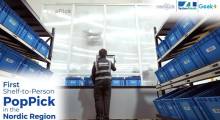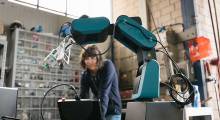In business school they teach the 4 P’s of Innovation: Product, Process, Position and Paradigm. While all four of these aspects are intertwined, undoubtably the most difficult one to change is ‘Paradigm’. Just ask Blockbuster, Polaroid, Toys “R” Us, Kodak about the difficulty navigating significant change; the list goes on and on.
Throughout the latter part of the 20th century, these companies were the envy of the business world. All it took to bring them down was one disruptor and a reluctance to change the way they thought about their business.
This reluctance to change is engrained in our behavior. It’s human to strive for consistency in our lives and rely on a routine to give us that sense of comfort and confidence that we need to become proficient in daily tasks.
Let’s think about something as small as our morning routine. I would imagine 99% of us perform the same tasks every day as we are preparing for work. If something happens that causes a change in our routine, it can easily feel like our whole day is thrown off.
Now imagine you were forced to get ready for work in a different home where everything you needed was in a different location. This is how your managers and operators will feel as you migrate to a new supply chain intralogistics software.
Their paradigm is centered around your legacy software and how it operates. They know exactly how to navigate the system because their routine has been the same for years.
Besides simply providing the warehouse software platform, your software integrator should also help make the shift to the new system as seamless as possible.
3 Elements To Make Warehouse Software Change Easier To Navigate
1. Quality Training: Practice Makes Perfect
Look for providers who offer customized training solutions tailored to the requirements of your specific operation, bridging the gap between system and users to prepare your team for the transition. From our decades of experience as hardware independent software integrators, we’ve seen great success with experiential training.
This methodology combines a mix of classroom and hands-on training approaches to ensure that your team gains the knowledge and practical experience needed for a smooth implementation. Think of this kind of training as the blueprint for the new house you are forced to get ready in. You have the layout and understand where the tools are that you need to perform your routine. The next step is to practice and perfect it.
2. User Acceptance Testing
As we move into the UAT (user acceptance testing) and go-live phase of the migration, the software provider’s on-site implementation team should rely more on your managers and operators to run the system. This approach gives your team personal experiences with the new software. Whether these are successes or teaching opportunities, the learning curve is better managed if your team takes ownership of the system.
This starts by allowing them to run through the UAT plans to ensure the platform is functioning as expected. Post UAT, the integrator’s team should remain on-site for a predetermined duration to help your team and the software reach stable operation. Go-live is an opportunity for your team members to run production out of the facility while the integration team remains close by to support operations. At this point in the migration, the goal is to become more hands off as the weeks go by.
3. Hypercare Support
Ensuring your team gains initial and continued confidence in the software to successfully navigate the paradigm shift is crucial beyond initial install and setup. Hypercare support, a step beyond regular support, helps ensure a seamless launch for our customers. It ensures all of the effort, money and time they’ve put into this solution isn’t lost. Hypercare is a more proactive approach, taking in feedback to perfect the solution rather than waiting for complaints or issues to arise. It can help identify areas for improvement in the next upgrade.
Support That Makes Change Easy
Change is difficult to manage and navigate. Often times, we find ourselves going out of our way to avoid change. If you come to the realization that your legacy supply chain intralogistics software no longer fits the needs of your business, don’t panic.
Bastian Solutions can help modernize and optimize your operations with our Exacta software suite. Through our training, user acceptance testing and hypercare support, we will give you the tools you need to manage the migration to the Exacta intralogistics software platform.
Related White Papers
How to Ease Labor Challenges with Advanced Automation
Automation can help a retailer handle everything required with their unique e-commerce fulfillment challenges. Download Now!
Microfulfillment Strategies – Top Priorities for Retailers
Consumers’ buying patterns have changed the game for retailers - COVID has supercharged the demand for online shopping, same day or even within the hour delivery. Download Now!
Article topics











